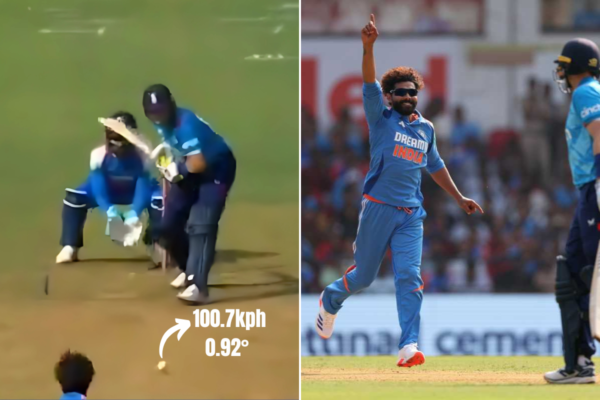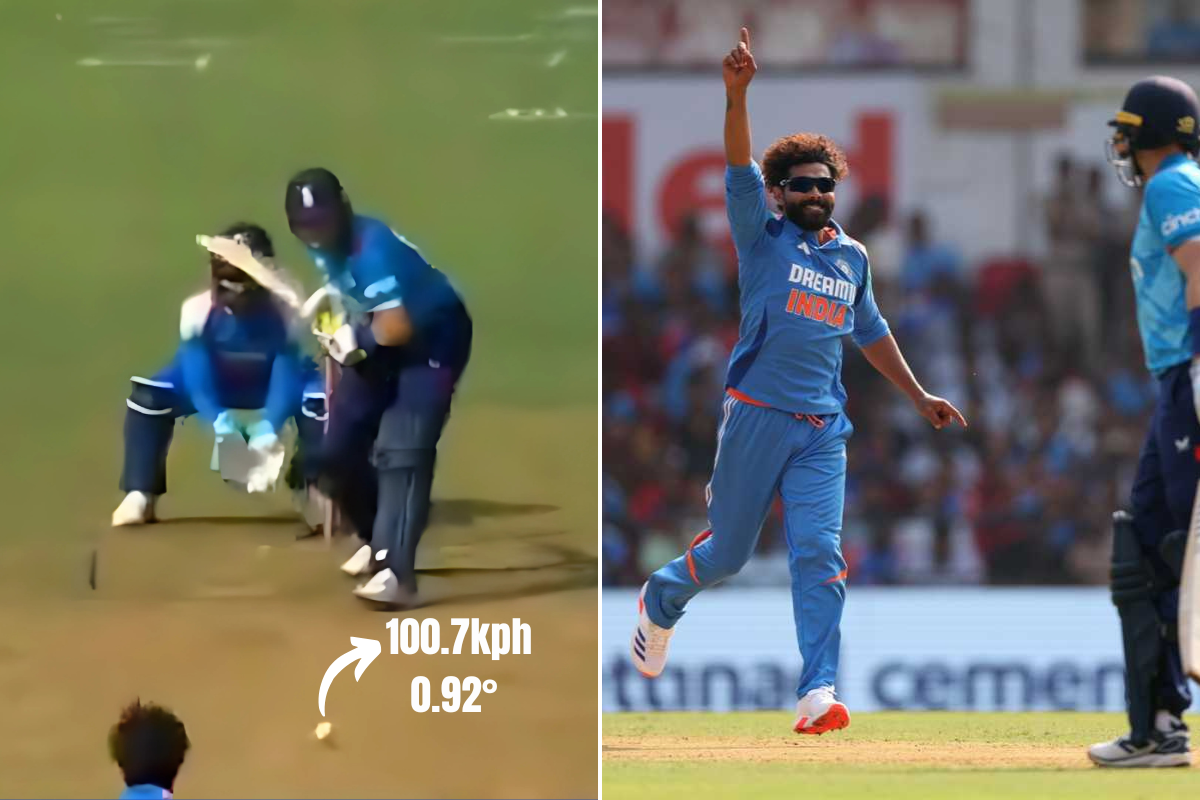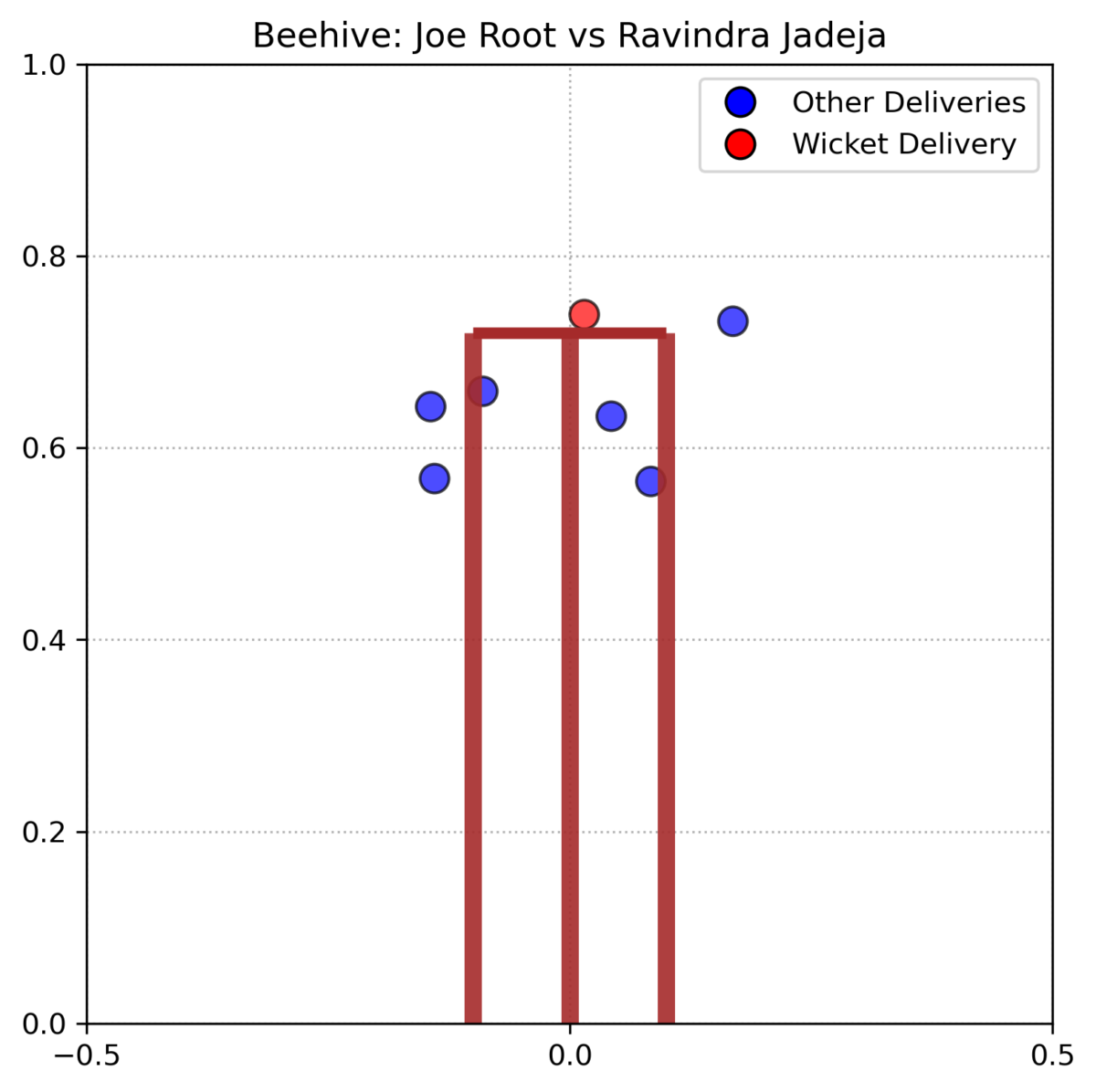
The setup was so perfect that even Root fell despite being in his comfort zone.

This England white-ball side boasts several quality spin players, including the young ones. Ben Duckett has a range of sweep shots, Harry Brook can use his feet well and plays a quality inside-out shot, while Jacob Bethell brings pedigree against tweakers, even if he hasn’t unleashed his true potential yet. Then their naturally aggressive gameplay makes them more noticeable than others around them.
Amidst so many dashers around, Joe Root still quietly holds the key for England while handling spin, even in this format. He might not look as flamboyant as Duckett or Brook, but he picks lengths early and mostly plays late by using the depth of the crease. His backfoot game is immaculate, allowing him to let the ball do its thing and adjust accordingly; that’s his method across formats.
So, spinners require a special delivery to get rid of him, especially these days when he is in the form of his life. And, Ravindra Jadeja brought one to dismiss him in Nagpur. The setup was so perfect that even Root fell despite being in his comfort zone.
The deck in Nagpur was not completely flat, as it looked in the initial phase. There was some turn for spinners, and the odd ball bounced awkwardly high or low. Jadeja is masterful in such conditions; his Test career is built on these surfaces.
The ball that dismissed Root pitched at 5.77 meters, that uncertain length where batters often fall deciding whether to go forward or remain backward. But there are more layers to this and the previous deliveries. All the deliveries to Root before the dismissal were stock balls that turned significantly more.

The average turn on non-wicket deliveries faced by Root from Jadeja was 2.82°, but the bowler sharply darted an arm ball that went straight with the angle and deviated only 0.92°, which is almost minimal. Even the lengths before the wicket delivery were fuller, an average of 4.22 meters compared to 5.77 meters.
The dismissal delivery was the quickest (100.7 km/h) Jadeja bowled to Root, while the previous deliveries had an average of 96.81 km/h. The ball bounced 0.73 meters after pitching, again the highest among all deliveries (an average on non-wicket deliveries was 0.63 meters). So, the ball just zipped through and didn’t give enough time to the batter to defend.

Joe Root’s interception points are always interesting. The average interception point of Root was 0.49 meters from the stumps against Jadeja before that wicket-taking delivery; on the dismissal one, he played 0.64 meters, which shows Root was stuck in between, for he could neither come on the front foot nor move off the backfoot fully.
Several factors led to his misjudgment of length and footwork errors However, the biggest factor that often plays a role is the dip on the ball. The dip ensures the ball lands shorter than its original length, and the slower the speed, the higher the dip.
Also Read:
So, when Jadeja bowled at slower speeds before the wicket delivery, the average drop angle was -15.20° (the negative value shows the downward curve). Meanwhile, the wicket delivery dipped at an angle of -14.92°, which means the ball landed slightly fuller with a flatter trajectory than Root anticipated and couldn’t go on the back foot in time, and it just kept coming with the arm. It was also why the bounce was more than the other deliveries - the dip automatically makes the ball bounce higher after pitching.
The whole setup was brilliant, and Jadeja showed why he is among the best spinners in world cricket. Joe Root has played some of the most memorable knocks in Asia across formats and was slowly getting into his groove. Indeed, it required a perfect delivery to dismiss a batter of Root’s calibre. It's worth watching how the England maestro counters the Jadeja threat in the remaining two games.
For more updates, follow CricXtasy on Facebook, Instagram, Twitter, Telegram, and YouTube.